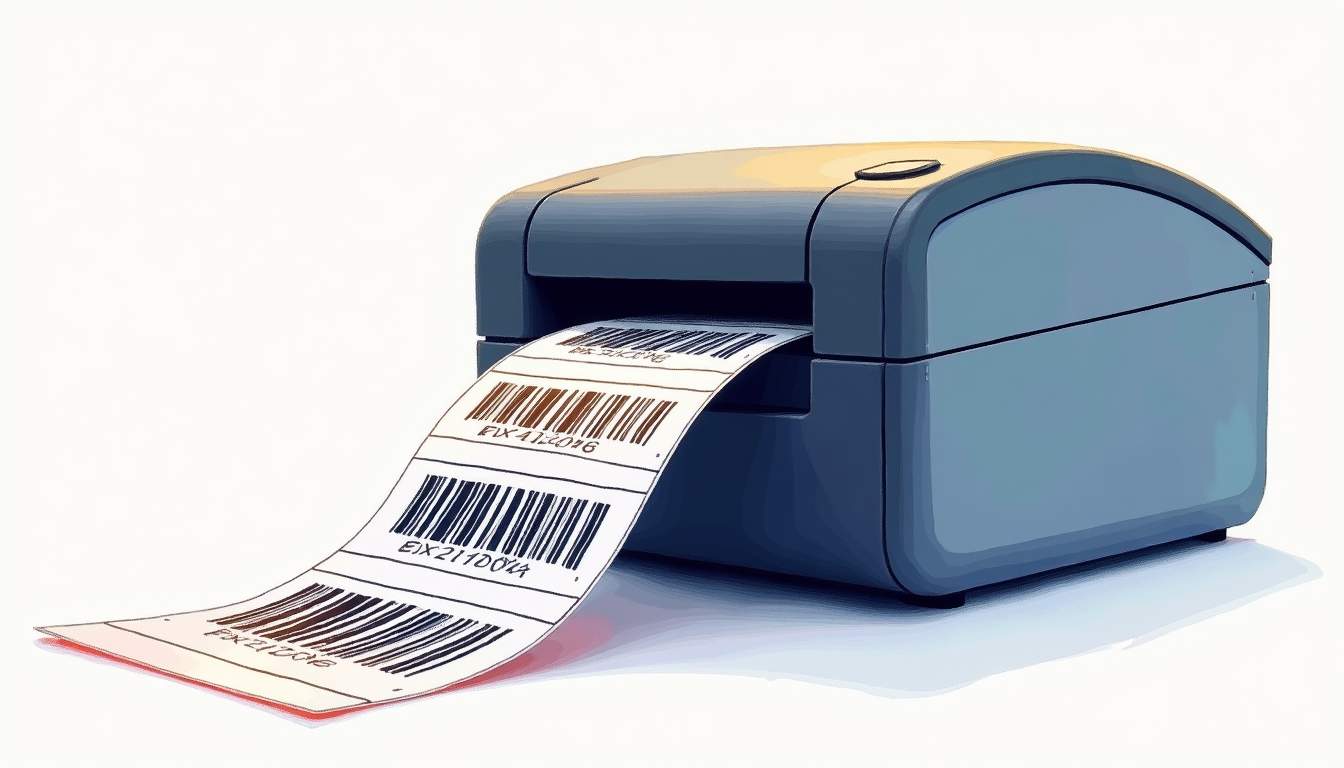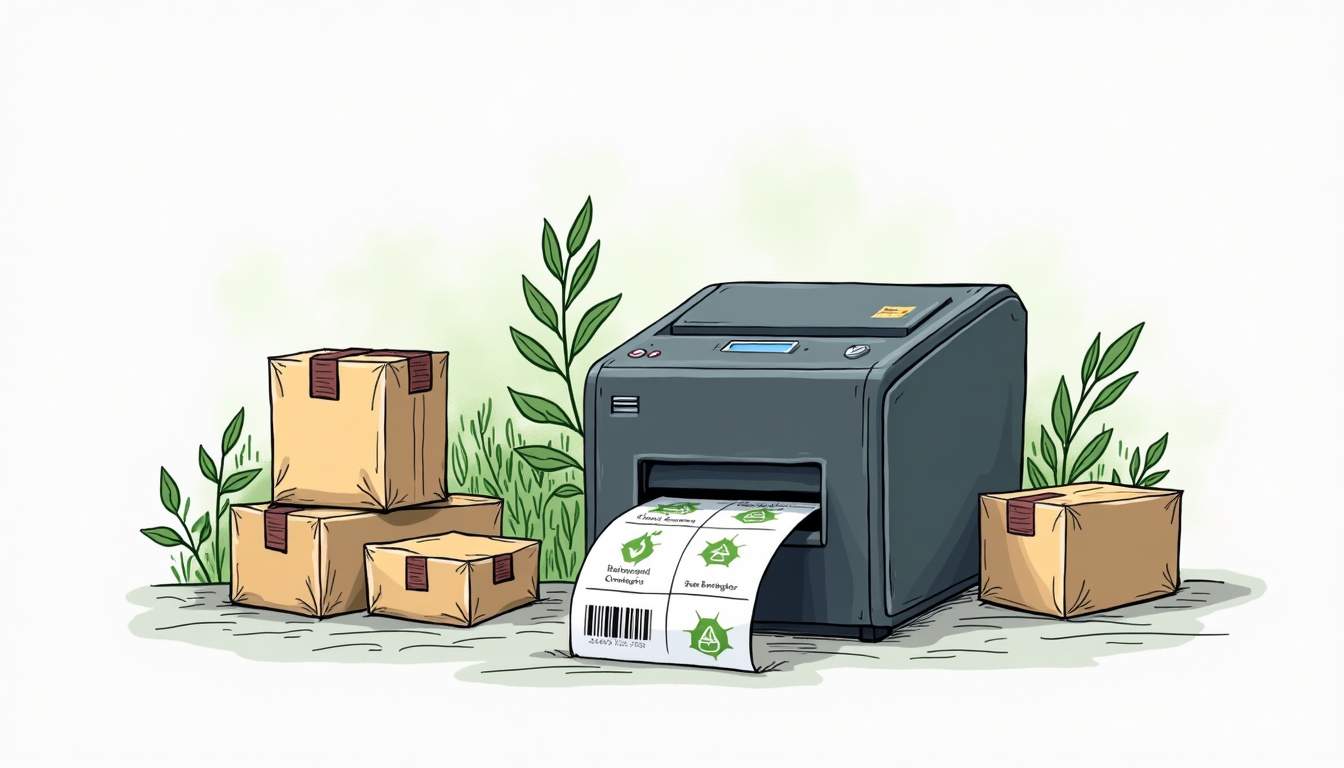Barcode printers have become indispensable tools for businesses that rely on quick, accurate labeling. But not every printer fits neatly into every workspace or workflow. That’s where compact barcode printers step in-small in size but big on functionality. Whether you’re managing inventory in a cramped storeroom or printing labels on the go, these devices pack a surprising punch.
Space-Saving Design Without Compromise
One of the most obvious advantages of compact barcode printers is their size. They’re designed to fit into tight spaces, making them ideal for environments where every inch counts. Retail counters, small warehouses, mobile kiosks, and even healthcare settings benefit from a printer that won’t dominate the workspace.

But don’t mistake small for weak. These printers often feature robust build quality and durable materials that withstand daily use. Manufacturers engineer them to be lightweight yet sturdy, so they’re easy to move if needed but still reliable enough for continuous operation.
Compact printers often come with clever design touches like top-loading media trays, which simplify label replacement without requiring extra desk space. This thoughtful engineering means less downtime and smoother workflows.
Moreover, many compact barcode printers are equipped with advanced connectivity options, such as Bluetooth and Wi-Fi, allowing them to integrate seamlessly into existing systems. This wireless capability is particularly beneficial in dynamic environments like retail stores or hospitals, where mobility and flexibility are crucial. Users can print labels directly from their mobile devices or tablets, streamlining the process and enhancing productivity.
Additionally, the versatility of compact barcode printers extends beyond just printing labels. Some models offer the ability to print on various media types, including wristbands, tags, and even receipts, making them a multifunctional tool for businesses. This adaptability not only saves space but also reduces the need for multiple devices, further optimizing the workspace and simplifying inventory management. To learn more about high-quality compact barcode printers and solutions, visit Libra Labels a leading supplier and manufacturer in the industry.
Fast and High-Quality Printing
Speed matters when printing barcodes. Slow printers can bottleneck operations, especially in busy environments. Compact barcode printers typically deliver fast print speeds, often ranging from 4 to 6 inches per second or more. This means labels are ready almost instantly, keeping lines moving and products flowing. In high-demand scenarios, such as retail checkouts or warehouse operations, the ability to print quickly can significantly enhance productivity, allowing staff to focus on customer service rather than waiting for labels to print.

Print quality is equally critical. A barcode that’s blurry or misaligned can cause scanning errors, leading to delays and frustration. Despite their size, compact printers produce sharp, clear barcodes with high resolution—usually around 203 to 300 dpi. This ensures scanners read the codes easily, reducing errors and improving efficiency. Additionally, many modern printers offer customizable settings to adjust the darkness and contrast of the print, allowing businesses to tailor their labels for specific environments or materials, which can further enhance readability.
Some models even support advanced printing technologies like thermal transfer, which uses a ribbon to produce long-lasting labels resistant to smudging, fading, or exposure to harsh environments. This is especially useful in industrial or outdoor settings. Furthermore, these printers often come equipped with features such as automatic calibration and sensor technology that ensures optimal print quality, regardless of the media used. With the ability to print on various materials, including synthetic labels that withstand moisture and chemicals, businesses can ensure their barcodes remain legible and functional in any situation.
Moreover, many compact barcode printers are designed with user-friendly interfaces and connectivity options, such as Bluetooth and Wi-Fi, making them easy to integrate into existing workflows. This flexibility allows for on-demand printing directly from mobile devices or tablets, which is particularly advantageous in dynamic environments like warehouses or field operations. The combination of speed, quality, and convenience makes these printers an essential tool for businesses looking to streamline their operations and maintain high standards of accuracy in their inventory management and tracking processes.
Connectivity Options That Keep You Flexible
Modern workplaces demand flexibility, and compact barcode printers deliver with a variety of connectivity options. USB remains a staple for direct, reliable connections to a single computer. But many printers also offer Ethernet ports for network integration, allowing multiple users to send print jobs from different devices.
Wireless connectivity is a game-changer for mobile or temporary setups. Wi-Fi-enabled printers let staff print labels from tablets, smartphones, or laptops without being tethered to a desk. Bluetooth support adds another layer of convenience, especially for quick, short-range printing tasks.
This range of connectivity options means compact printers can fit into almost any IT environment, from simple standalone setups to complex networked systems. It’s about making printing as seamless as possible, no matter where or how you work.
Moreover, many modern printers are now compatible with cloud printing services, allowing users to send print jobs from anywhere with an internet connection. This feature is particularly beneficial for businesses with remote workers or those who frequently travel, as it eliminates the need for physical proximity to the printer. Users can simply upload their documents to a cloud service and print them from the nearest compatible printer, streamlining workflows and enhancing productivity.
In addition to traditional connectivity methods, some compact barcode printers are beginning to incorporate NFC (Near Field Communication) technology. This allows users to initiate printing tasks simply by tapping their NFC-enabled devices against the printer. This feature not only speeds up the printing process but also enhances security by ensuring that only authorized devices can send print jobs. As technology continues to evolve, these innovative connectivity options will further transform how businesses approach their printing needs, making operations more efficient and adaptable than ever before.
User-Friendly Features for Smooth Operation
Ease of use is a big selling point for compact barcode printers. Many come with intuitive control panels featuring LCD screens that display status updates, error messages, and menu options. This helps users troubleshoot issues quickly without needing specialized training.
Loading labels and ribbons is often designed to be straightforward. Drop-in media loading means you don’t have to wrestle with complicated mechanisms or guess the right way to insert supplies. This saves time and reduces the risk of jams or misfeeds.
Some printers include software that simplifies label design and printing. These programs often support a wide range of barcode symbologies, fonts, and graphics, allowing businesses to customize labels to their exact needs without fuss.
Durability and Reliability for Demanding Environments
Compact doesn’t mean fragile. Many barcode printers are built to endure tough conditions. Whether it’s a busy retail environment, a warehouse with dust and debris, or a healthcare setting requiring frequent cleaning, these printers are up to the task.
Look for models with metal frames or reinforced plastic housings that resist wear and tear. Some printers are rated for specific environmental factors like humidity or temperature extremes, ensuring consistent performance wherever they’re used.
Reliability is crucial. Downtime can disrupt entire operations. That’s why many compact printers are engineered for long service intervals and easy maintenance. Features like self-cleaning printheads and accessible parts help keep printers running smoothly with minimal intervention.
Cost-Effectiveness Without Sacrificing Quality
Budget is always a consideration. Compact barcode printers often offer a sweet spot between affordability and performance. Their smaller size generally means lower material and manufacturing costs, which can translate into savings for buyers.
Beyond the initial purchase price, these printers tend to be economical to operate. Efficient energy use, affordable consumables, and minimal maintenance requirements help keep ongoing costs down.
Investing in a compact printer doesn’t mean sacrificing label quality or durability. Many models deliver professional-grade output that meets industry standards, making them a smart choice for businesses looking to optimize expenses without compromising results.
Portability for On-the-Go Labeling
Some compact barcode printers are designed with portability in mind. These lightweight, battery-powered models enable printing in the field, whether it’s for inventory audits, shipping labels at a loading dock, or price tags at a pop-up shop.
Portability expands the possibilities for where and how labels can be printed. It eliminates the need to return to a central location, speeding up processes and improving accuracy by printing labels right where they’re needed.
Features like rugged carrying cases, long battery life, and wireless connectivity make portable compact printers practical tools for mobile professionals.
Compatibility and Integration with Existing Systems
Barcode printers rarely operate in isolation. Integration with existing software and hardware is essential for smooth workflows. Compact printers often support a wide range of programming languages and protocols, such as ZPL, EPL, or XML, which facilitate communication with inventory management, point-of-sale, or shipping systems.
Many models also come with drivers compatible with popular operating systems like Windows, macOS, and Linux. This ensures that no matter what technology stack a business uses, the printer can fit right in.
APIs and SDKs offered by some manufacturers allow developers to create custom applications or automate printing tasks, further enhancing flexibility and efficiency.
Environmental Considerations and Energy Efficiency
Smaller devices often consume less power, and compact barcode printers are no exception. Many models are designed to meet energy efficiency standards, reducing electricity costs and environmental impact.

Thermal printing technology itself is eco-friendly compared to traditional inkjet or laser printers since it doesn’t require ink or toner cartridges. This reduces waste and simplifies supply chains.
Some printers also offer features like sleep mode or automatic power-off after periods of inactivity, further conserving energy without sacrificing readiness.
Final Thoughts
Picking the right compact barcode printer comes down to understanding your specific needs. Consider the volume of labels you print daily, the types of barcodes required, and the environment in which the printer will operate. Don’t overlook connectivity options and software compatibility, as these can significantly affect how smoothly the printer integrates into your workflow.
Compact barcode printers offer a blend of portability, speed, quality, and durability that can transform labeling tasks from a chore into a streamlined process. Whether you’re outfitting a small retail space or equipping a mobile team, these printers provide powerful capabilities in a surprisingly small package.
 WhatsApp Us Now
WhatsApp Us Now

